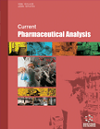
Full text loading...
We use cookies to track usage and preferences.I Understand
Imatinib is a first-line medicine for chronic myeloid leukemia (CML) and gastrointestinal mesenchymal stromal tumors (GIST). Co-administration of nifedipine may lead to drug-drug interactions that affect the clinical efficacy of imatinib. Imatinib and nifedipine are substrates for the cytochrome enzyme CYP3A4. This study aimed to research the pharmacokinetic effect of nifedipine on imatinib and its metabolism N-desmethyl imatinib in rats.
Twenty healthy SD rats were randomly divided into two groups. The control group was administered imatinib by gavage for 14 days, and the experimental group was co-administered imatinib and nifedipine by gavage for 14 days. The plasma concentrations of imatinib and N-desmethyl imatinib in rats were determined by ultra-performance liquid chromatography-mass spectrometry.
The MRT0-∞ and Tmax of imatinib in the experimental group differed significantly from the control group after a single dose (P < 0.05, 95% CI). Tmax and t1/2z of imatinib and AUC0-∞ and Tmax of N-desmethyl imatinib were also obviously different between the two groups after multiple doses (P < 0.05, 95% CI).
The study showed that nifedipine might inhibit the imatinib metabolism after single- dose administration, but nifedipine did not significantly impact imatinib metabolism after multiple-dose administration.

Article metrics loading...

Full text loading...
References


Data & Media loading...

